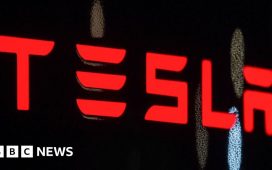UK market regulators have calculated that aggressive high-speed traders beating the rest of the stock market to deals amounts to a “tax” of £42,000 ($55,000) for every £1bn traded.
Investors often express concern about the risk of having orders picked off by lightning-fast algorithms seeking to exploit small moves in stock prices, while regulators have been keen to assess the impact of such activity on market stability and integrity.
A new paper — published on Monday and written by Matteo Aquilina and Peter O’Neill of the UK’s Financial Conduct Authority and Eric Budish from the University of Chicago Booth School of Business — focused on a tactic known as latency arbitrage. That is where some high-frequency trading firms use a split-second lead to profit by “sniping” older, uncompetitive quotes in so-called races.
The study found that “races” took place about once a minute for FTSE 100 stocks and accounted for a fifth of overall FTSE 100 daily trading volume. The winners triumph by tiny margins of 0.000005 to 0.000010 seconds.
“We find that the ‘latency arbitrage tax’, defined as the ratio of daily race profits to daily trading volume, is 0.42 basis points, or 0.0042 per cent,” the authors said.
The authors used messaging data, which captures successful trades as well as cancelled transactions, to examine a nine-week period of trading on the London Stock Exchange in the autumn of 2015.
After calculating the “tax”, or value extracted by high-frequency traders, the authors then applied the number to 2018 data and concluded that the sum at stake in latency arbitrage in the UK equity market was about £60m a year. Extrapolated globally, they said that amounts to about $5bn.
“Our main hope for future research . . . is simply that other researchers and regulatory authorities replicate our analysis for markets beyond UK equities,” the authors said.
Researchers argued that the features of the market that give rise to latency arbitrage races have not changed since 2015, meaning high-speed traders still have opportunities for profits.
The top three high-speed trading firms, which the report did not name, accounted for more than half of all race wins and losses. Commercial rivals have tried out “speed bumps” to slow down the market.
A spokesperson for the LSE said. “[Our] markets provide deep liquidity and efficiency for a wide range of market participants.”
Mr Aquilina has conducted other studies on high-frequency trading for the FCA. In 2016 he found no evidence that HFTs could “see the true market” and trade in front of other participants.













